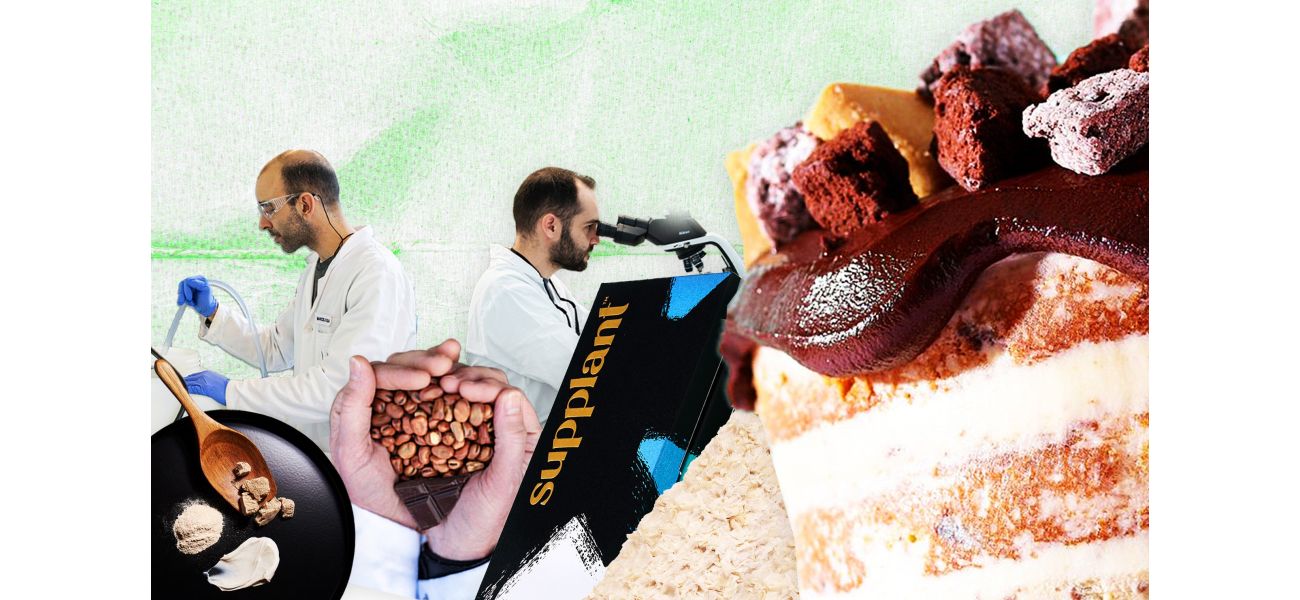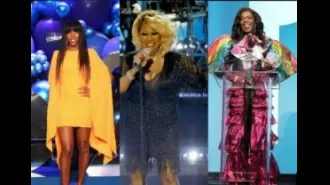What foods will be part of our diet in 2050, from microorganisms to chocolate without beans?
Grocery stores may offer specialized food options for senior citizens, alongside the usual baby food and snacks.
February 15th 2025.

At the 'Taste of Tomorrow' exhibition in London, visitors can see some of the potential products that may be available in 2050. Instead of cows grazing in fields, there are bubbling tanks of bacteria. Supermarkets may have aisles dedicated to food for the elderly, in addition to the usual baby food and snacks. And your chocolate won't come from cocoa beans, but from broad bean plants.
These are just some of the possibilities for food in the future, and many of them are already being developed. In fact, a dog treat made from microorganisms is set to go on sale in the UK this year. The company behind it, Pet brand Tuggs, already sells food made from insects and is now turning to bacteria as well. They source their powdered microorganisms from MicroHarvest, a company that believes these tiny creatures could be the solution to global food shortages.
Founder and CEO of MicroHarvest, Katelijne Bekers, explained to Metro that bacteria do not have the same "ick" factor as insects, as we already consume them in fermented foods such as yogurt, sourdough, and beer. While some may question this, given the negative associations with bacteria such as Salmonella and E.Coli, a growing number of biotech startups are betting on bacteria to become a staple in our diets.
One might wonder, would you be willing to eat protein made from bacteria? The options are: "Why not?", "No, I'll stick with sirloin", or "Maybe". Share your results on Facebook or tweet about it.
At the 'Taste of Tomorrow' exhibition, visitors can see a variety of products made from microorganisms, including 'Micro Bites' for pets, which are made from bacteria. Katelijne Bekers, the founder and CEO of MicroHarvest, is also featured at the exhibition. They even have a children's book explaining their technology. In one corner, there is a tank of bacteria soup ready to be harvested.
MicroHarvest can convert sugars into protein in just 24 hours. After they multiply in a bioreactor, the bacteria are harvested and turned into a powder, which can be used as an ingredient in various foods such as baked goods, protein shakes, and even fake meats. "We can already produce one tonne per day," says Bekers. While she did not reveal exactly which types of bacteria they use, she did mention that they are the same ones used in fermentation.
Some companies are taking things a step further by creating food from "thin air" using bacteria that feed on carbon dioxide and hydrogen. One of these companies, Novonutrients, aims to become a new pillar of the food system that is not dependent on agriculture. They claim that nutritionally, bacteria are on par with beef and even superior to plant-based alternative proteins, all at a reduced cost.
Both MicroHarvest and Novonutrients are featured at the new 'Taste of Tomorrow' exhibition at The Mills Fabrica in London's King's Cross. The exhibition showcases the latest innovations in farming and food, including "beanless" coffee and chocolate, as well as ways to utilize parts of crops that are currently considered waste.
Another exhibitor, BetterDairy, uses milk proteins to create a realistic dairy-like taste without involving cows. The future of food is a hot topic, with issues such as climate change, population growth, and changing tastes all forcing us to rethink our current food system. In November of last year, the first 'Future of Food' competition was held in London, with companies competing for a £10,000 prize and recognition for their revolutionary products.
Among the participants were Dogtooth, who create fruit-picking robots that are as dexterous as human workers. Other companies showcased AI technology to reduce food waste, plastic-free dishwashing sponges, and vertical farms that can grow salad year-round. The winners, Nice Rice, have developed a way to reduce the environmental impact of rice production.
Barney Mauleverer, a food entrepreneur who launched and hosted the competition, believes that there are big opportunities in the changing food landscape. He explains that there are immediate trends that brands are trying to address, such as concerns over processed and sugary foods, as well as environmental issues like finding alternatives to palm oil. One trend that may be overlooked is the aging population. By 2050, there will be 10 million more people over the age of 65 in the UK, creating a gap in the market for products catering specifically to this demographic.
Mauleverer stresses the need for the food industry to adapt to these changes, even though many supermarket buyers tend to think in the short term. He believes that the massive shifts in how we produce and consume food are inevitable, with factors such as climate change and AI technology on the horizon. The current exhibition, 'Taste of Tomorrow: What will the world be eating in 2050?' at The Mills Fabrica, will be open until July 31.
These are just some of the possibilities for food in the future, and many of them are already being developed. In fact, a dog treat made from microorganisms is set to go on sale in the UK this year. The company behind it, Pet brand Tuggs, already sells food made from insects and is now turning to bacteria as well. They source their powdered microorganisms from MicroHarvest, a company that believes these tiny creatures could be the solution to global food shortages.
Founder and CEO of MicroHarvest, Katelijne Bekers, explained to Metro that bacteria do not have the same "ick" factor as insects, as we already consume them in fermented foods such as yogurt, sourdough, and beer. While some may question this, given the negative associations with bacteria such as Salmonella and E.Coli, a growing number of biotech startups are betting on bacteria to become a staple in our diets.
One might wonder, would you be willing to eat protein made from bacteria? The options are: "Why not?", "No, I'll stick with sirloin", or "Maybe". Share your results on Facebook or tweet about it.
At the 'Taste of Tomorrow' exhibition, visitors can see a variety of products made from microorganisms, including 'Micro Bites' for pets, which are made from bacteria. Katelijne Bekers, the founder and CEO of MicroHarvest, is also featured at the exhibition. They even have a children's book explaining their technology. In one corner, there is a tank of bacteria soup ready to be harvested.
MicroHarvest can convert sugars into protein in just 24 hours. After they multiply in a bioreactor, the bacteria are harvested and turned into a powder, which can be used as an ingredient in various foods such as baked goods, protein shakes, and even fake meats. "We can already produce one tonne per day," says Bekers. While she did not reveal exactly which types of bacteria they use, she did mention that they are the same ones used in fermentation.
Some companies are taking things a step further by creating food from "thin air" using bacteria that feed on carbon dioxide and hydrogen. One of these companies, Novonutrients, aims to become a new pillar of the food system that is not dependent on agriculture. They claim that nutritionally, bacteria are on par with beef and even superior to plant-based alternative proteins, all at a reduced cost.
Both MicroHarvest and Novonutrients are featured at the new 'Taste of Tomorrow' exhibition at The Mills Fabrica in London's King's Cross. The exhibition showcases the latest innovations in farming and food, including "beanless" coffee and chocolate, as well as ways to utilize parts of crops that are currently considered waste.
Another exhibitor, BetterDairy, uses milk proteins to create a realistic dairy-like taste without involving cows. The future of food is a hot topic, with issues such as climate change, population growth, and changing tastes all forcing us to rethink our current food system. In November of last year, the first 'Future of Food' competition was held in London, with companies competing for a £10,000 prize and recognition for their revolutionary products.
Among the participants were Dogtooth, who create fruit-picking robots that are as dexterous as human workers. Other companies showcased AI technology to reduce food waste, plastic-free dishwashing sponges, and vertical farms that can grow salad year-round. The winners, Nice Rice, have developed a way to reduce the environmental impact of rice production.
Barney Mauleverer, a food entrepreneur who launched and hosted the competition, believes that there are big opportunities in the changing food landscape. He explains that there are immediate trends that brands are trying to address, such as concerns over processed and sugary foods, as well as environmental issues like finding alternatives to palm oil. One trend that may be overlooked is the aging population. By 2050, there will be 10 million more people over the age of 65 in the UK, creating a gap in the market for products catering specifically to this demographic.
Mauleverer stresses the need for the food industry to adapt to these changes, even though many supermarket buyers tend to think in the short term. He believes that the massive shifts in how we produce and consume food are inevitable, with factors such as climate change and AI technology on the horizon. The current exhibition, 'Taste of Tomorrow: What will the world be eating in 2050?' at The Mills Fabrica, will be open until July 31.
[This article has been trending online recently and has been generated with AI. Your feed is customized.]
[Generative AI is experimental.]
0
0
Submit Comment





